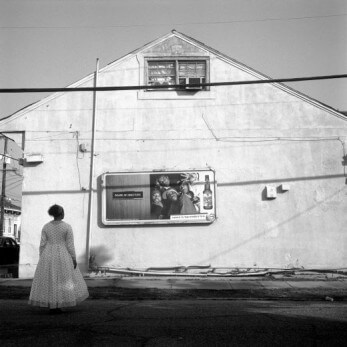L’avenir (looking forward), the 2014 Montreal Biennale, arises from two perspectives that meet somewhere in the middle. L’avenir is French for what is to come. While that appears to be quite poetic, it could refer to anything between death and the pizza that you just ordered. Looking forward––well, you speak English. We have two conditions of the biennale: the expected object and state, and the expectation itself. Spread out over 14 venues, the biennale comprised 50 artists from 22 countries. Half the artists were from Canada; 16 were from Québec. Although it would be incorrect to reduce the art to a thematic checklist, it seemed that the majority of the pieces held a Janus-faced relationship to both the future and history. This relationship appeared structurally in many of the ongoing research-based projects on display. It also appeared in the content of many pieces explicitly dealing with history.
This fall, the PAMM curatorial staff and I took a museum patron trip to New Orleans for Prospect.3: Notes for Now. This is the third installment in a series of large international contemporary art surveys still labeled “biennial” by the organizers, though four years have passed since Prospect 2. The first Prospect, which opened in November 2008, was organized in the aftermath of Hurricane Katrina, in large part as an engine of economic and community development for the devastated city. This edition was organized by Franklin Sirmans, head of contemporary art at the Los Angeles County Museum of Art. In my opinion one of the most talented curators of his generation, he has built a resume heavy on exhibition and publication projects designed to redress the omissions of the Eurocentric Modernist art-historical canon, telling the stories and presenting the artistic achievements of significant yet lesser-known women artists and artists of color from around the world.


